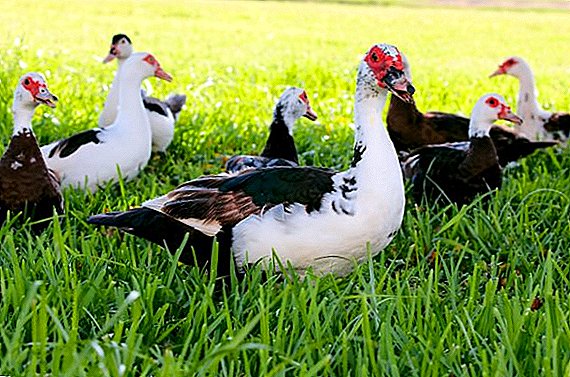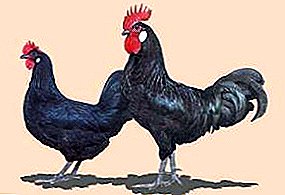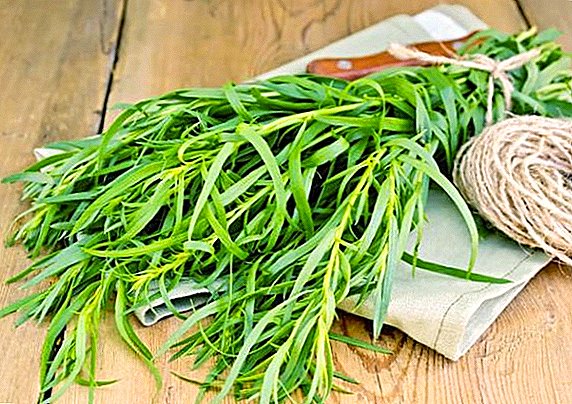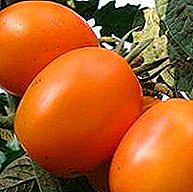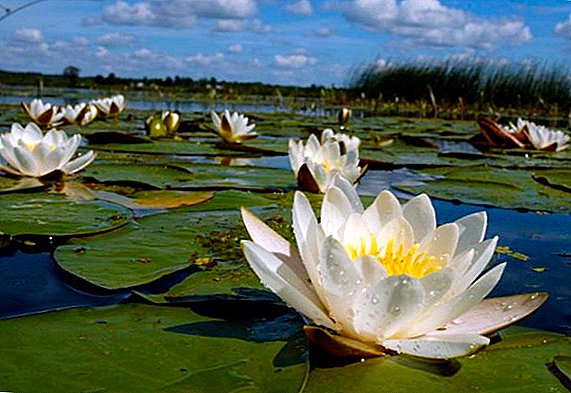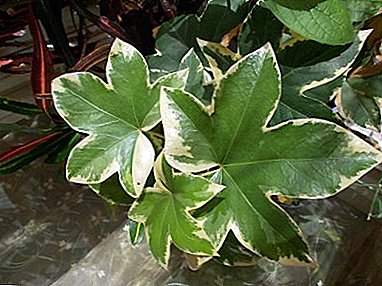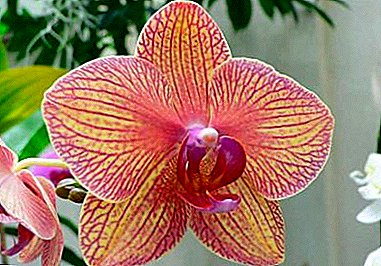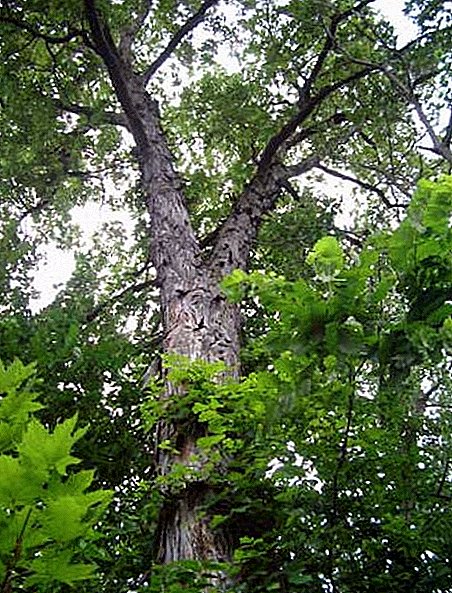 Walnut trees today grow in almost every cottage. An unpretentious plant does not require special care (rather, it can create problems for its owner because of its ability to grow very strongly), and the rich harvest of extremely useful walnuts provides a supply of vitamins for the long winter. An interesting, although less common in our latitudes, alternative to the "ordinary" nut is another member of the family - hickory.
Walnut trees today grow in almost every cottage. An unpretentious plant does not require special care (rather, it can create problems for its owner because of its ability to grow very strongly), and the rich harvest of extremely useful walnuts provides a supply of vitamins for the long winter. An interesting, although less common in our latitudes, alternative to the "ordinary" nut is another member of the family - hickory.
Caria genus (general description)
This tree from the Walnut family is known under the names of hickory (hickory), caria, and also pecan or American walnut.. It is believed that this is one of the most ancient plants on earth, with a solid trunk.
Hickory homeland is the eastern part of the North American continent. There it grows today, although the main areas of its industrial use are located in the southern and northern parts of the United States, and in Texas pecan is even the official state symbol.
However, today Carya has significantly expanded its distribution zone. It is quite successfully grown in Asia, the Caucasus and the Crimean Peninsula.  Pecan is a fairly tall tree. Its average height is 20–40 m, but giants are known to reach 65 m. American walnut grows slowly enough: in order to fully develop, it sometimes needs at least two hundred years, but even in three hundred years kariya can produce an excellent crop.
Pecan is a fairly tall tree. Its average height is 20–40 m, but giants are known to reach 65 m. American walnut grows slowly enough: in order to fully develop, it sometimes needs at least two hundred years, but even in three hundred years kariya can produce an excellent crop.
We advise you to read what useful properties pecan has.
By the way, about the history of the name. "Pecan" and "Hickory" are different variations of the Indian word "powcohicora", so the Aborigines called their favorite nut, which they enjoyed eating, splitting fruit with stone, and making bows from wood. "Kariya" comes from the ancient Greek "κάρυον", meaning hazel, however, this name used to be applied to walnuts, and not to American nuts.
In the hickory family there is one unusual representative that is a shrub. This is karya floridskaya. Basically, the family includes deciduous monoecious trees. Depending on the place of growth (in a forest or in an open area), an American walnut can form a wide crown in the shape of a tent or ellipse, or throw off the lower branches, extending upward towards the sun.
The pecan barrel is covered with smooth gray bark, which with age begins to crack and exfoliate like snake skin. Young branches have a light down, adults - smooth and powerful. The leaves are also large, toothed. Before dropping yellow. Hazel leaves only foliage, the stem on which the leaves hold, remains on the tree, often until the very spring.  The blooming of the American walnut almost coincides with the blooming of buds. During this period, the tree throws out numerous earrings of 3-8 pieces on one leg (unlike the walnut, where the earrings are single or paired). In pecan, cross-pollination or self-pollination is possible, but in the latter case the fruits practically do not ripen.
The blooming of the American walnut almost coincides with the blooming of buds. During this period, the tree throws out numerous earrings of 3-8 pieces on one leg (unlike the walnut, where the earrings are single or paired). In pecan, cross-pollination or self-pollination is possible, but in the latter case the fruits practically do not ripen.
Main types of caria
There are several dozen species of hickory. All of them are divided into three large subgroups - Kariya, Apocaria and Annamokaria.
Interestingly, the Apocarius genus includes very similar trees growing in different parts of the world.
Scientists have long puzzled over how little different species could parallel develop so far from each other. It was all clarified when it was established that many millions of years ago, Asia and North America were interconnected by a land bridge.
Read also about growing: cashew, walnut, Manchu, black and gray walnut.
During the period of global cataclysms, the bridge collapsed, many species of animals and plants (including representatives of the caria family) disappeared from the earth forever, and those that managed to survive began to develop independently of each other, forming new varieties.
Consider the most famous of them.
Kariya Pecan or Hickory Pecan
The tree is also known as Hickory Illinois. Actually, this is the very American walnut with which the story of caria was started. It grows mainly in the United States, covering almost the entire southern region from Mississippi and Texas to Iowa and Indiana.  It has more than a hundred and fifty subspecies and is valued by Americans no less than our walnut.
It has more than a hundred and fifty subspecies and is valued by Americans no less than our walnut.
Europeans are also trying to grow in their Illinois beauties. Such experiments with more or less success are carried out in Spain, France and Ukraine, but for full fruiting the tree needs a sufficient amount of heat and a long summer. However, hickory winter hardiness is quite high, so that in a European climate, a tree may well grow.
Did you know? American pecans in the Nikitsky Botanical Garden grew over a hundred years. Its height was 20 m, and the trunk in the girth reached half a meter. However, as is known, before the construction of the North Crimean Canal (1961-1971), the Crimean peninsula experienced serious water problems, so the moisture in Nikita was not enough even for a relatively drought-resistant pecan. As a result, the tree died in 1935, and did not reach full maturity.
So, the main requirement of the Illinois hickory is a hot climate with enough moisture. In these conditions, the yield of pecan lasts up to three centuries.
Nuts begin to ripen in mid-autumn, and they continue to collect almost until May of the next year. To increase fertility, it is advisable to plant several trees to provide them with cross-pollination. 
Karya is naked
This is another representative of the American walnut, also known as pork caria. His homeland - the eastern part of Canada and the United States, the Atlantic coast. The decorative weeping crown gives a special charm to the tree, especially in the lower part. More drought-resistant than hickory pecan, in addition, can grow on less fertile soils and even in the shade. Cold resistance is also impressive: the tree can survive temperature jumps down to -34 ° C
Since the second half of the XVIIIth century it has been grown on an industrial scale.  Under favorable conditions, the tree can reach 40 m in height and 1 m in the girth of the trunk. The bark is dark gray, with multiple cracks. The branches are elegant, beautiful brown color. The sheet plate on the inside also has a brownish tint, on the outside it is yellow-green. The leaf itself is large (from 15 to 18 cm in length and from 3 to 7 cm in width), with a pointed thin tip. Fruits in length reach 4 cm.
Under favorable conditions, the tree can reach 40 m in height and 1 m in the girth of the trunk. The bark is dark gray, with multiple cracks. The branches are elegant, beautiful brown color. The sheet plate on the inside also has a brownish tint, on the outside it is yellow-green. The leaf itself is large (from 15 to 18 cm in length and from 3 to 7 cm in width), with a pointed thin tip. Fruits in length reach 4 cm.
Kariya oval or hickory shaggy
This representative of the hickory prefers the south-western part of the North American continent. The height does not differ from bare naked. The tree has received its second name due to strongly cracking bark, which hangs in whole layers from the trunk. The main color of the bark is grayish-brown, however, unlike the above-described species, which has smooth bark, in this species of karya the bark is covered with numerous grooves.  Oval (or ovoid) caria is named because of the characteristic shape of a dense crown. This type of hickory forms a sprig of 5 leaves, sometimes there are 7 of them. Young leaves are covered with a light down, then it disappears. Nuts are quite large, up to 6 cm. The shape of the fruit is round, slightly flattened on both sides, the shell is dense, light brown in color.
Oval (or ovoid) caria is named because of the characteristic shape of a dense crown. This type of hickory forms a sprig of 5 leaves, sometimes there are 7 of them. Young leaves are covered with a light down, then it disappears. Nuts are quite large, up to 6 cm. The shape of the fruit is round, slightly flattened on both sides, the shell is dense, light brown in color.
Important! There are several varieties of hickory shaggy, which differ among themselves, including the size of the fruit. So, the fruits of Nuttalia and the Carian ash-leaved are much smaller than those of the classical Caria oval, but large six-centimeter nuts also grow on the Caria Galezia. But the most delicious fruit has a hybrid of Caria oval with Kariya heart-shaped.
Hickory shaggy in frost resistance exceeds pecan, but loses karii naked: this tree is able to withstand frosts not lower than -25 ° C. Lighting requirements are also quite high, especially with age. Compared with the previous representative of the American walnut, for this type of hickory, the soil needs more fertile.
Americans, however, began to plant oval hazel purposefully almost a century and a half earlier than naked. For breeding, seeds are used, in contrast to bare, obligatory stratification, they do not require (although its preliminary implementation is still welcome). 
Kariya white or Kariya felt
Another representative of hickory, grown by Americans since the middle of the XVIII century. The tree is shorter than the above described species, the average height usually does not exceed 30 m. Under natural conditions, it grows in south-western regions of North America. It has a dark gray bark, which, like other types of caria, exfoliates and hangs down in layers. The crown is wide, pyramidal shape, compact.
The first name is explained by the color of the leaves, the second - by their structure: the leaf plate is pale and covered with a bottom of the felt, like felt. 5 branches are formed on the branch, less often 7 leaves up to 30 cm long. The lower part of the plate has a darker color than the upper one.
Nuts are quite large, up to 5 cm in diameter, as well as shaggy hickory, have a slightly flattened round shape and a light brown dense shell. The fruits of this species are distinguished by high taste with a distinct sweet touch.  Karya felt can withstand cooling to -30 ° C and, in contrast to the more gentle pecan, it is fully capable of existing in the conditions of a megacity. Due to its high endurance, it is even grown in the southern regions of Russia as an ornamental walkway plant. Another advantage of this species is that it is much later than other representatives of the genus, sheds leaves, for a long time adding luxurious brownish-golden colors to the dull autumn city landscape.
Karya felt can withstand cooling to -30 ° C and, in contrast to the more gentle pecan, it is fully capable of existing in the conditions of a megacity. Due to its high endurance, it is even grown in the southern regions of Russia as an ornamental walkway plant. Another advantage of this species is that it is much later than other representatives of the genus, sheds leaves, for a long time adding luxurious brownish-golden colors to the dull autumn city landscape.
Kariya Fringed or Hickory Thick
One more name of this American is known - Big shaggy hickory. He chose the eastern part of the North American continent, and prefers to grow in forests, mixed and coniferous-deciduous, near the water source.
In accordance with one of the names, the tree is quite large. The trunk of an adult hickory in girth can reach a meter, and the height of the crown - up to 40 m. The bark has a light gray color. Cracking all over the square, it hangs from its trunk with a long fringe, so the tree is called fringed.
The leaves of this species are also larger than that of its brethren; one branch can be up to half a meter in length, seven or nine leaves of 20 cm each are formed on it. The tree acquires a certain "fringing" not only due to the detached layers of the bark, but also thanks to the petiole, which remains on the tree after the foliage falls  The fruits of the Big Shaggy Gikari also correspond to the name. Strong and large, up to 6 cm, they have an excellent sweet taste, thanks to which they have earned the nickname "royal nut".
The fruits of the Big Shaggy Gikari also correspond to the name. Strong and large, up to 6 cm, they have an excellent sweet taste, thanks to which they have earned the nickname "royal nut".
Americans have been breeding this type of caria not so long ago as its other relatives, just from the beginning of the nineteenth century. The plant is extremely demanding of moisture, but still quite able to adapt to European climatic conditions, so that is often used on this continent in landscape design.
Fruit
The main feature of hickory nuts is their hard shell.
Did you know? American Indians called pecans all nuts that could not be split differently than using tools like stone.
It should be immediately noted that, unlike the Indians, the inhabitants of Europe have not yet mastered the culture of using hickory nuts for food. First of all, this is explained by the fact that caria itself does not bear fruit very well in our area, and it even starts to produce a noticeable harvest no earlier than at the 15th year of life.  For this reason, nuts are mostly grown for decorative purposes, and purposeful work to improve the quality of the fruits is practically not done.
For this reason, nuts are mostly grown for decorative purposes, and purposeful work to improve the quality of the fruits is practically not done.
The main part of hickory, which is represented on the market, is the harvest collected by craftsmen from wild-growing trees, often the seller himself cannot explain exactly what kind of nut he sells, and the buyer understands the question even less. If we talk about the global scale, to this day 4/5 hickory nuts are still harvested in the United States.
Important! Not all the fruits of caria are generally edible. The best shaggy hickory nuts have the best taste. The fruits of Kariya are felt, oval, north-Caroline, and pale. But, for example, bare hazelnuts are not very suitable as a delicacy - they are bitter and tasteless.
Hickory fruit looks very similar to our usual walnuts. They also crack on four (as a rule) flaps, have, depending on age, greenish, light brown or dark brown skin and a small edge on the top.
The thickness of the hickory skin, contrary to the ideas of the Indians, is not always thick: in some species, it does not exceed 2 mm, while in others, indeed, it is almost up to a centimeter. The size of the grain can also be different: from 1.5 cm (like hazelnuts) to 6.5 cm (like a large walnut).  Americans are happy to eat the fruits of certain types of hickory, and the salted oil made from them is filled with nut oil. The taste of these nuts is perfectly combined with rice, fish and mushrooms.
Americans are happy to eat the fruits of certain types of hickory, and the salted oil made from them is filled with nut oil. The taste of these nuts is perfectly combined with rice, fish and mushrooms.
Kariya fruits are high in calories (691 kcal per 100 g), but they contain a full set of vitamins and microelements: beta-carotene, thiamine, riboflavin, niacin, pantothenic acid, pyridoxine, folic acid and ascorbic acid, tocopherol, phylloquinone, choline, and also potassium, calcium, magnesium, sodium and phosphorus, are, albeit in small quantities, iron, manganese, copper, selenium, zinc and fluorine. In addition, these nuts contain monounsaturated fats, tannins, phytosterols.
It is clear that such a product has many useful properties. They improve the antioxidant barrier, remove the "bad" cholesterol from the body, improve the cardiovascular system.
Nuts - an important component of any proper and healthy diet. Find out what are useful: walnuts for men and women, Brazil nuts, Manchurian nuts, pine nuts, cashews, hazelnuts, almonds, peanuts, pistachios, black nuts, macadamia nuts and nutmegs.
The main disadvantage of hickory nuts is high allergenicity. In addition, due to the high caloric content and a large number of biologically active components of this product can not be abused: the use of more than 100 g at a time can cause serious digestive disorders.
Wood
Caria wood is valued, perhaps, much higher than its fruits.
Hickory wood has different shades of brown (which is not surprising, given the diversity of types of caria), although far from the American continent you can usually find only two color options - white or red). It is always distinguished by excellent strength.
Did you know? Even the first conquerors of the Wild West noticed the amazing density of American walnut wood and began to make wheels from it for their wagons. Interestingly, the first plane in the world, according to some sources, was also built from caria, although, according to other sources, the Wright brothers still used spruce in their invention.
By this indicator, the tree even surpasses the ash-tree beloved by many designers. Kariya is hard and heavy, but still tolerates flexion well.
The negative sides of the material include poor adhesion, as well as difficulty in processing. In addition, wood shrinks heavily. But decorative processing caria - a pleasure. It is remarkably polished and very well painted over, in addition, it can be bleached without fear.  Thanks to these properties, American walnut is widely used for the manufacture of furniture, parquet, doors, steps and stairs. Among the smaller works, the material is also used for the production of handles of various instruments, sports equipment and even ... drumsticks. This type of wood can always be found on sale, and its prices are fairly affordable.
Thanks to these properties, American walnut is widely used for the manufacture of furniture, parquet, doors, steps and stairs. Among the smaller works, the material is also used for the production of handles of various instruments, sports equipment and even ... drumsticks. This type of wood can always be found on sale, and its prices are fairly affordable.
It should be noted that the magnificent flavor of hickory has long been marked by cooks of all countries: they often use sawdust and American walnut chips when making dishes on the grill, thanks to this secret meat, fish and vegetables acquire a completely unique smell of sweet smoke.
Did you know? Two and a half percent of the wood used in industry in the United States of America is hazelnut.
American walnut has not yet become widespread in Europe, although some of its species have long been successfully grown on a certain part of it.
It is unlikely that soon we should expect that the hickory nuts will seriously press their walnut relatives on our tables, there are quite objective reasons for this.
Feedback from network users

But the decorative properties of the plant and the quality of wood fully deserve closer attention from both landscape design specialists and woodworking industry workers.



